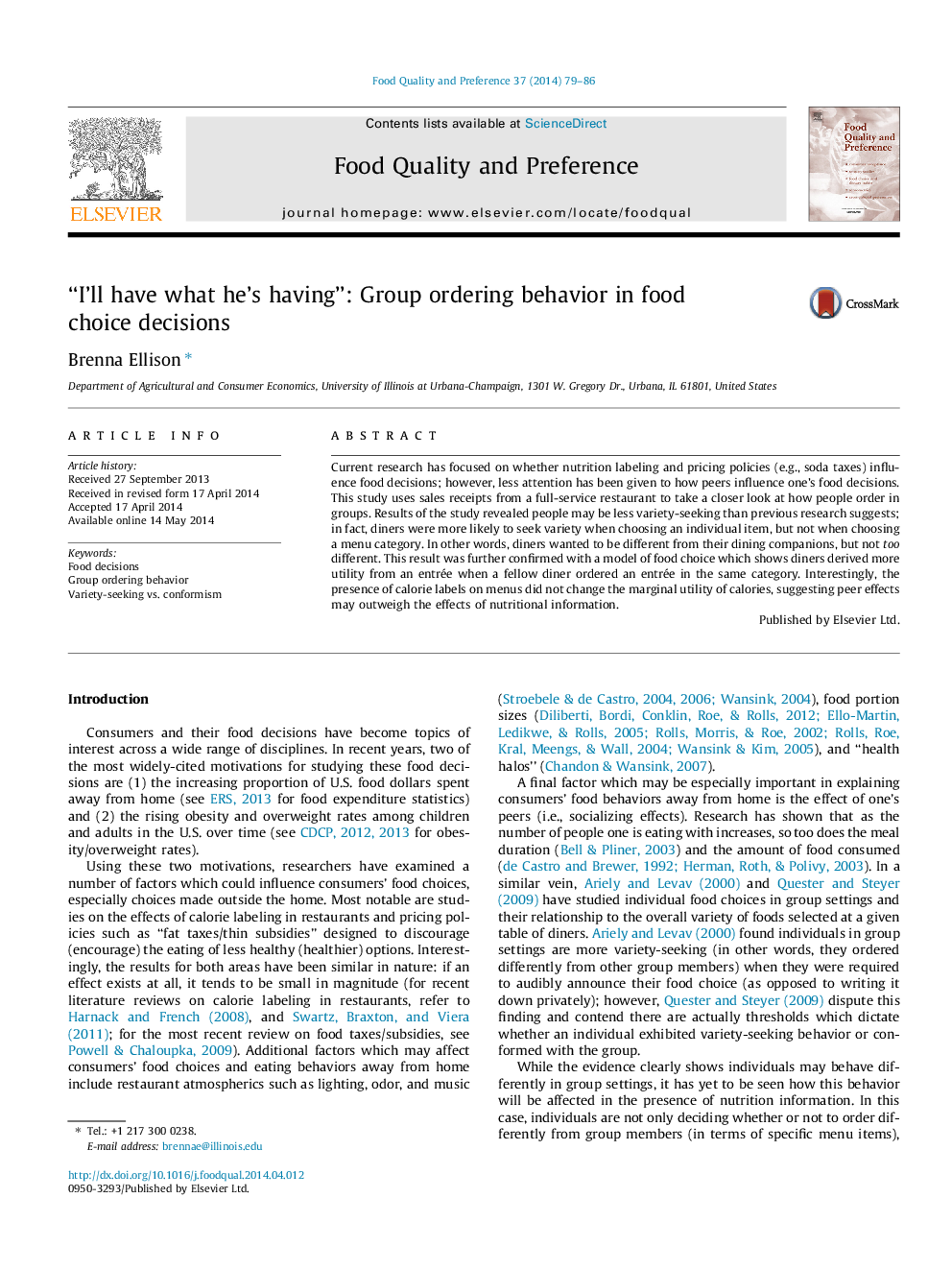| کد مقاله | کد نشریه | سال انتشار | مقاله انگلیسی | نسخه تمام متن |
|---|---|---|---|---|
| 4317207 | 1613160 | 2014 | 8 صفحه PDF | دانلود رایگان |
• We examine the level of item variety and category variety at restaurant tables.
• Diners are more likely to seek item variety than category variety.
• Diners are happier if another diner orders from the same food category as them.
• Calorie labels did not influence the marginal utility of calories.
• Peer effects may outweigh the effects of nutritional information on food choice.
Current research has focused on whether nutrition labeling and pricing policies (e.g., soda taxes) influence food decisions; however, less attention has been given to how peers influence one’s food decisions. This study uses sales receipts from a full-service restaurant to take a closer look at how people order in groups. Results of the study revealed people may be less variety-seeking than previous research suggests; in fact, diners were more likely to seek variety when choosing an individual item, but not when choosing a menu category. In other words, diners wanted to be different from their dining companions, but not too different. This result was further confirmed with a model of food choice which shows diners derived more utility from an entrée when a fellow diner ordered an entrée in the same category. Interestingly, the presence of calorie labels on menus did not change the marginal utility of calories, suggesting peer effects may outweigh the effects of nutritional information.
Journal: Food Quality and Preference - Volume 37, October 2014, Pages 79–86
